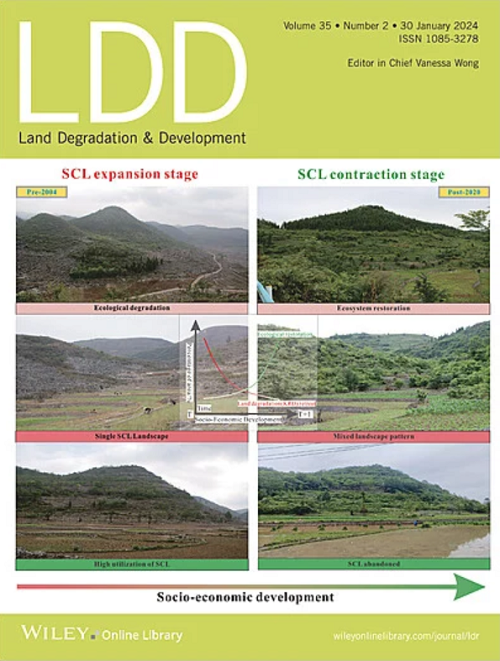Impacts of Di(2-Ethylhexyl) Terephthalate on Multigenerational Fitness of Caenorhabditis elegans via Lipid Metabolism and Neural Regulation
IF 3.6
2区 农林科学
Q2 ENVIRONMENTAL SCIENCES
引用次数: 0
Abstract
Di(2-ethylhexyl) terephthalate (DEHTP) is a substitutive plasticizer with wide occurrence in environmental and human samples and therefore its toxicity is urging concerns. Presently, its effects on the fitness of Caenorhabditis elegans (i.e., reproduction, lifespan, and behavior) were explored with a consecutive exposure over four generations (F1–F4). At mg/L and μg/L levels, DEHTP stimulated reproduction in F1 and F3 (e.g., 35% and 28% higher than the control at 8.0 mg/L) while inhibiting it in F2 and F4 (e.g., 22% and 18% less than the control at 8.0 mg/L), representing oscillation over generations. Meanwhile, DEHTP inhibited lifespan in F1 and F3 while stimulating it in F2 and F4, showing trade-off relationships with reproductive influences. Regarding behavior, DEHTP inhibited satiety quiescence duration, body bending, and head swing, while stimulating reverse and omega turns. In mechanism exploration, DEHTP disturbed lipid metabolites and lipid metabolism enzymes. Moreover, the effects on reproduction showed positive correlations with those on fatty acid synthase (FAS) and acyl-CoA (FA-CoA). DEHTP also disturbed neural regulations including neural transmitters and the expressions of related genes. Out of expectation, the effects on neural regulations were positively correlated with those on lipid metabolism, but not with locomotion behavior. Hierarchical clustering analysis (HCA) showed that serotonin was more connected with neural regulations than other indicators in F1 and F3, while it was more connected with behavior than others in F2 and F4. The HCA results also supported the oscillatory changes in effects of DEHTP over generations.二(2-乙基己基)对苯二甲酸二酯通过脂质代谢和神经调节对秀丽隐杆线虫多代适应性的影响
二(2-乙基己基)对苯二甲酸二酯(DEHTP)是一种广泛存在于环境和人体样本中的替代增塑剂,其毒性引起了人们的广泛关注。目前,通过连续暴露4代(F1-F4),研究其对秀丽隐杆线虫(Caenorhabditis elegans)的适应性(繁殖、寿命和行为)的影响。在mg/L和μg/L水平下,DEHTP刺激F1和F3的繁殖(例如,在8.0 mg/L水平下比对照高35%和28%),抑制F2和F4的繁殖(例如,在8.0 mg/L水平下比对照低22%和18%),表现出世代振荡。同时,DEHTP抑制F1和F3的寿命,刺激F2和F4的寿命,显示出与生殖影响的权衡关系。在行为方面,DEHTP抑制饱腹感静止时间、身体弯曲和头部摆动,同时刺激反向和omega旋转。在机制探索中,DEHTP干扰脂质代谢产物和脂质代谢酶。此外,对繁殖的影响与脂肪酸合成酶(FAS)和酰基辅酶a (FA-CoA)的影响呈正相关。DEHTP还干扰神经调节,包括神经递质和相关基因的表达。出乎意料的是,对神经调节的影响与脂质代谢的影响呈正相关,而与运动行为无关。层次聚类分析(HCA)结果显示,血清素在F1和F3中与神经调节的相关性高于其他指标,而在F2和F4中与行为的相关性高于其他指标。HCA的结果也支持了DEHTP在代际间影响的振荡变化。
本文章由计算机程序翻译,如有差异,请以英文原文为准。
求助全文
约1分钟内获得全文
求助全文
来源期刊

Land Degradation & Development
农林科学-环境科学
CiteScore
7.70
自引率
8.50%
发文量
379
审稿时长
5.5 months
期刊介绍:
Land Degradation & Development is an international journal which seeks to promote rational study of the recognition, monitoring, control and rehabilitation of degradation in terrestrial environments. The journal focuses on:
- what land degradation is;
- what causes land degradation;
- the impacts of land degradation
- the scale of land degradation;
- the history, current status or future trends of land degradation;
- avoidance, mitigation and control of land degradation;
- remedial actions to rehabilitate or restore degraded land;
- sustainable land management.
 求助内容:
求助内容: 应助结果提醒方式:
应助结果提醒方式:


